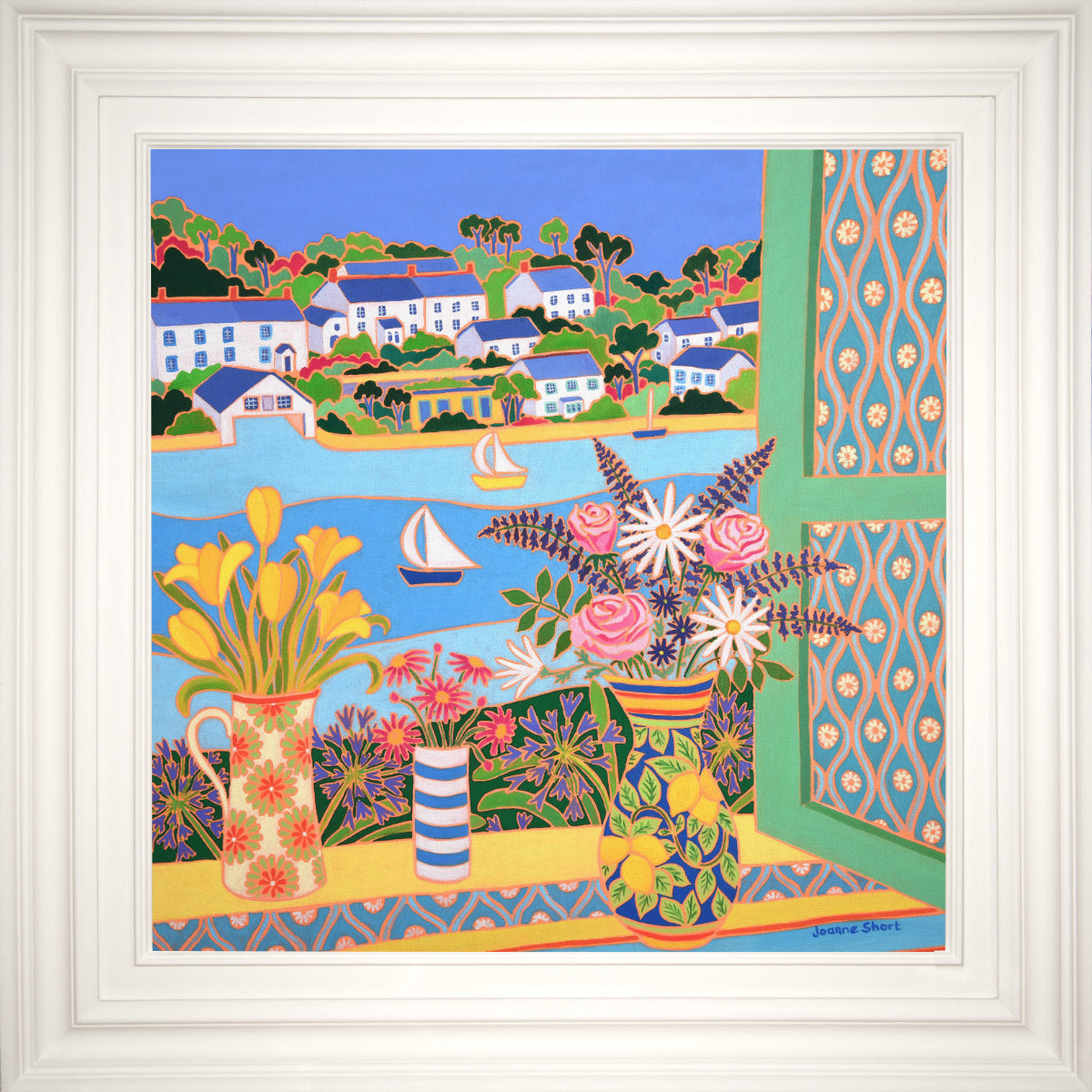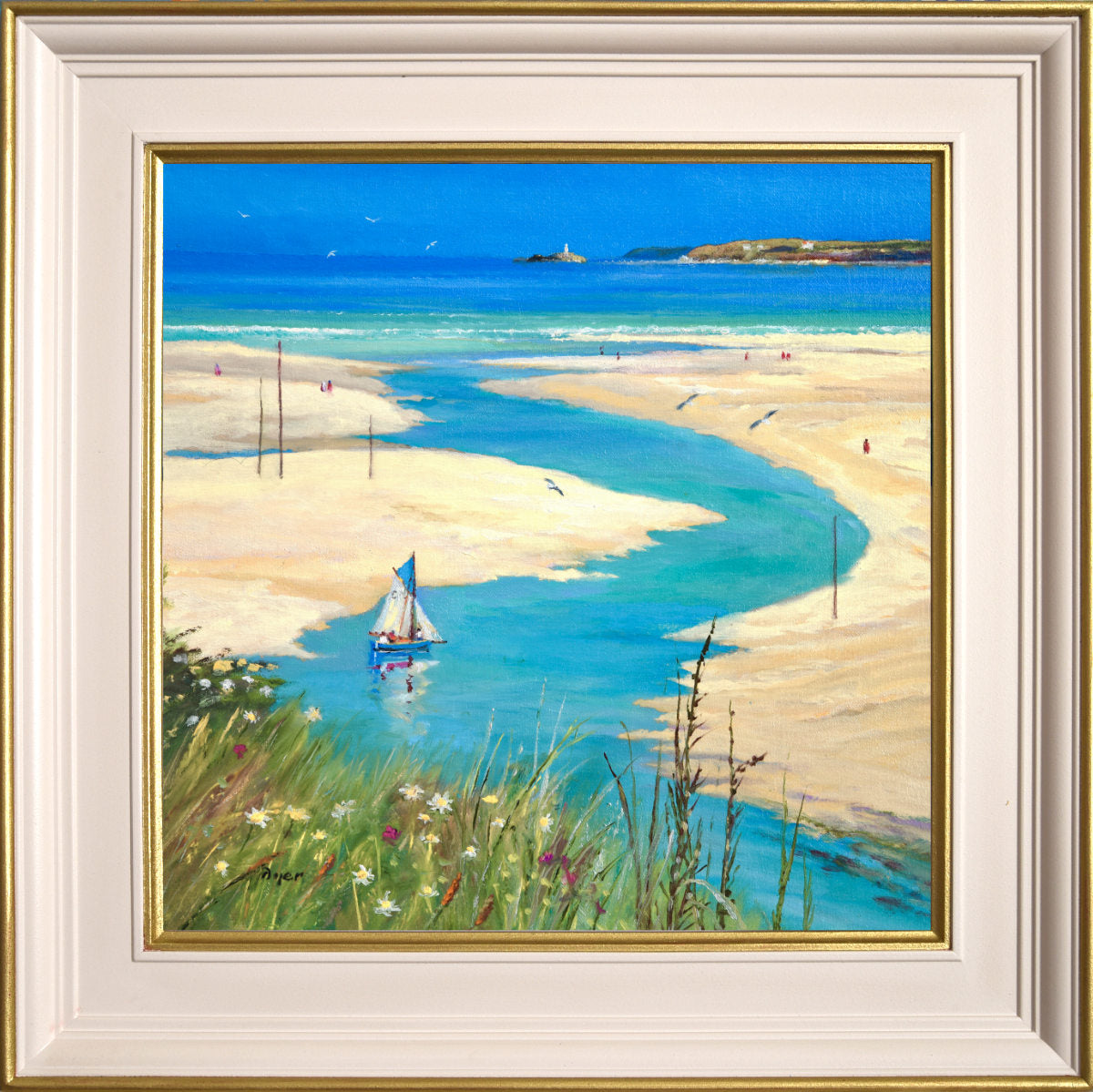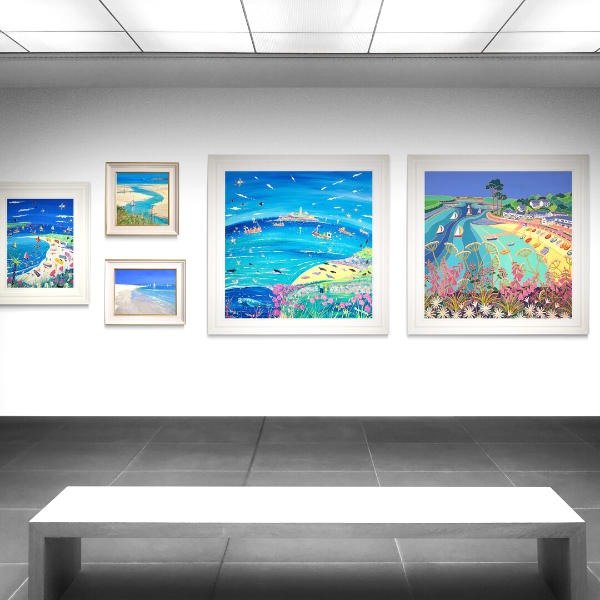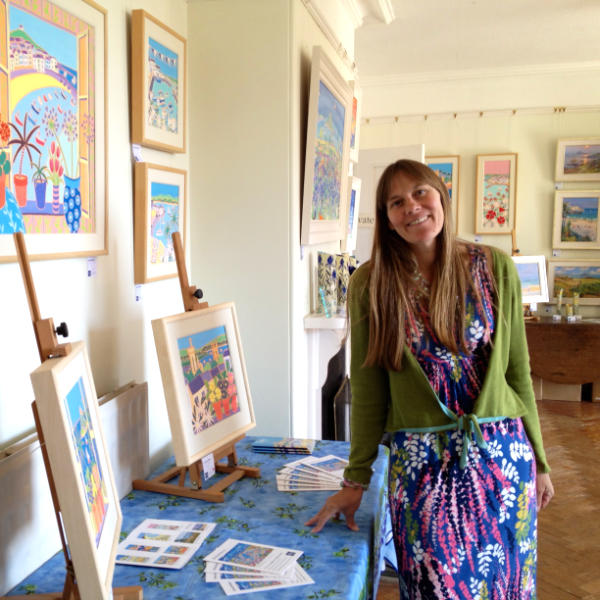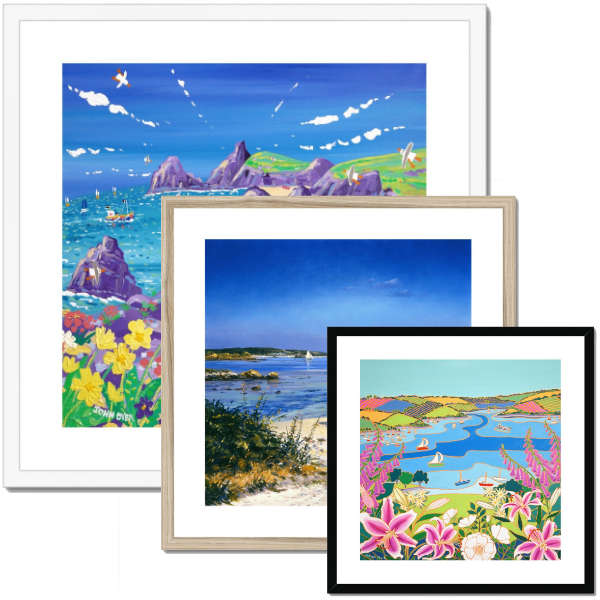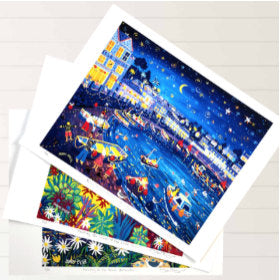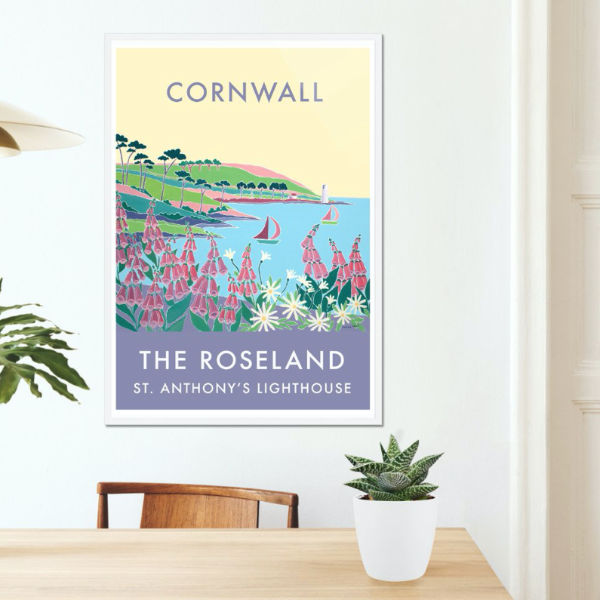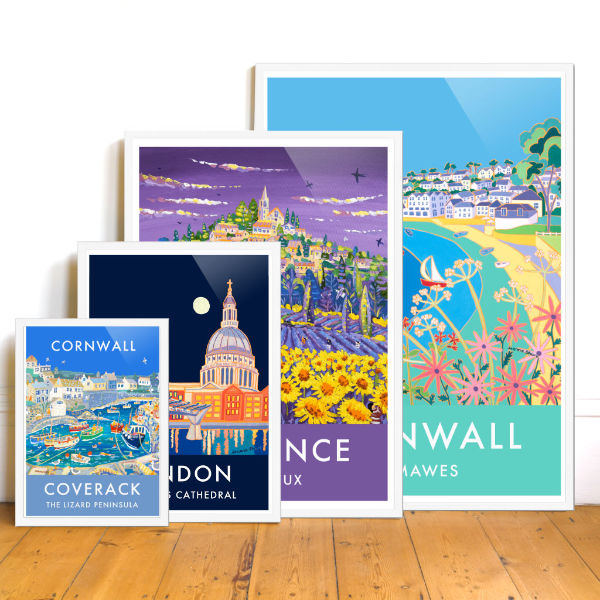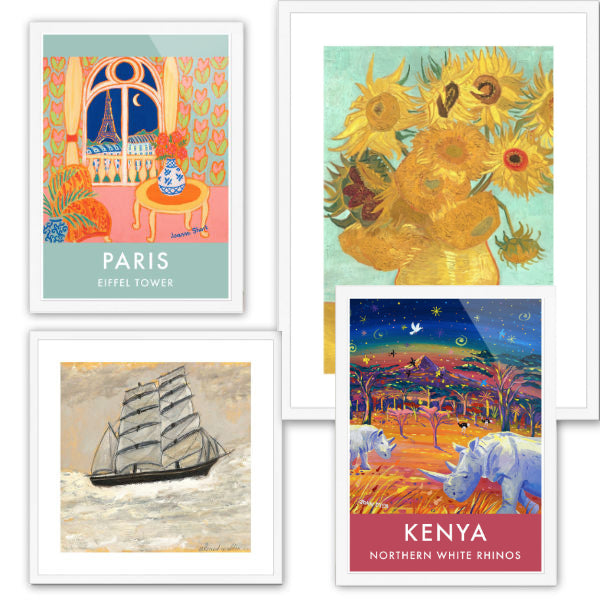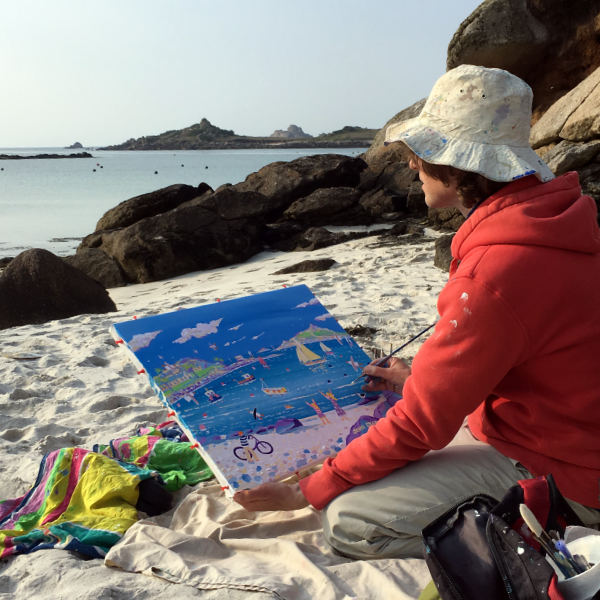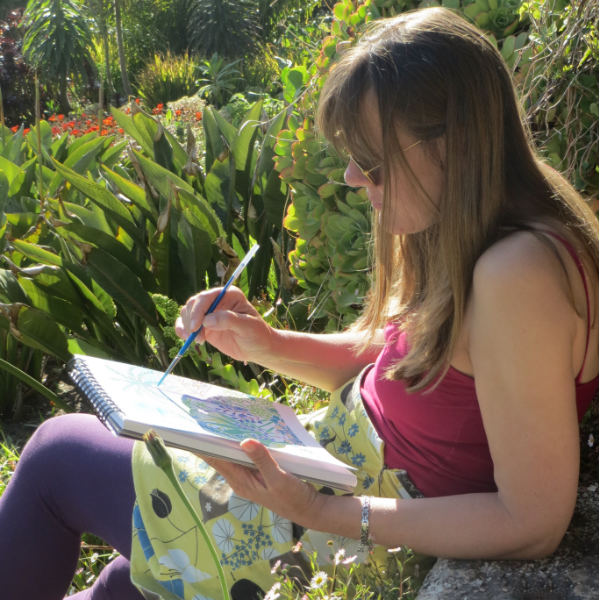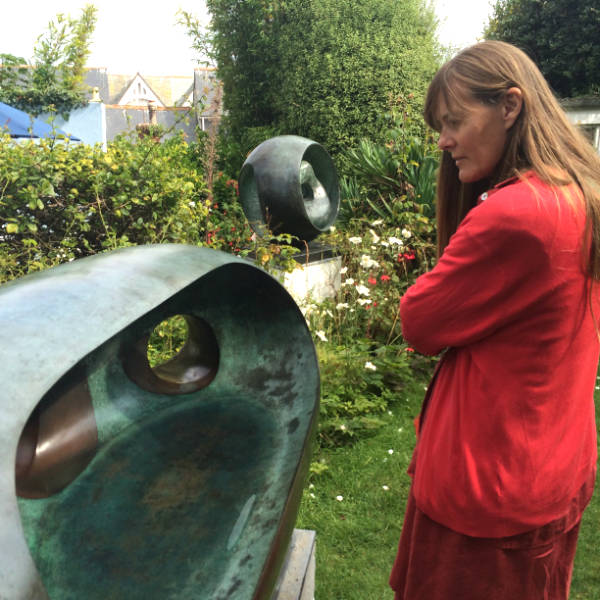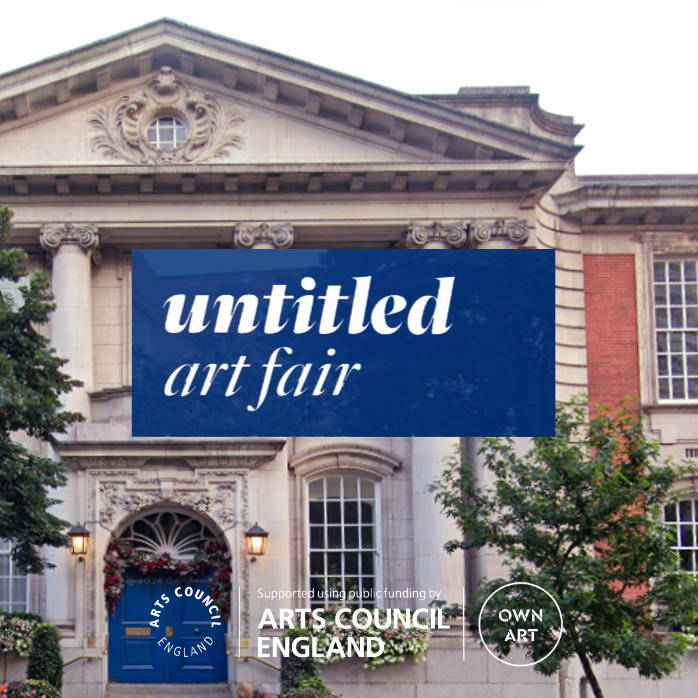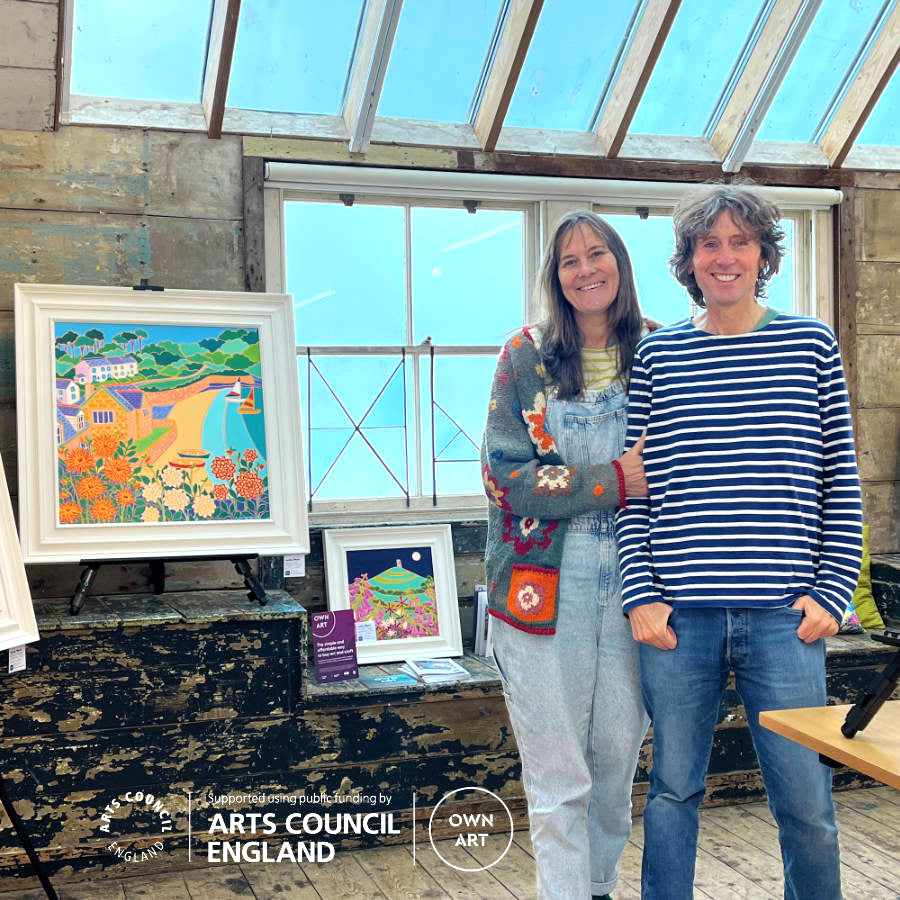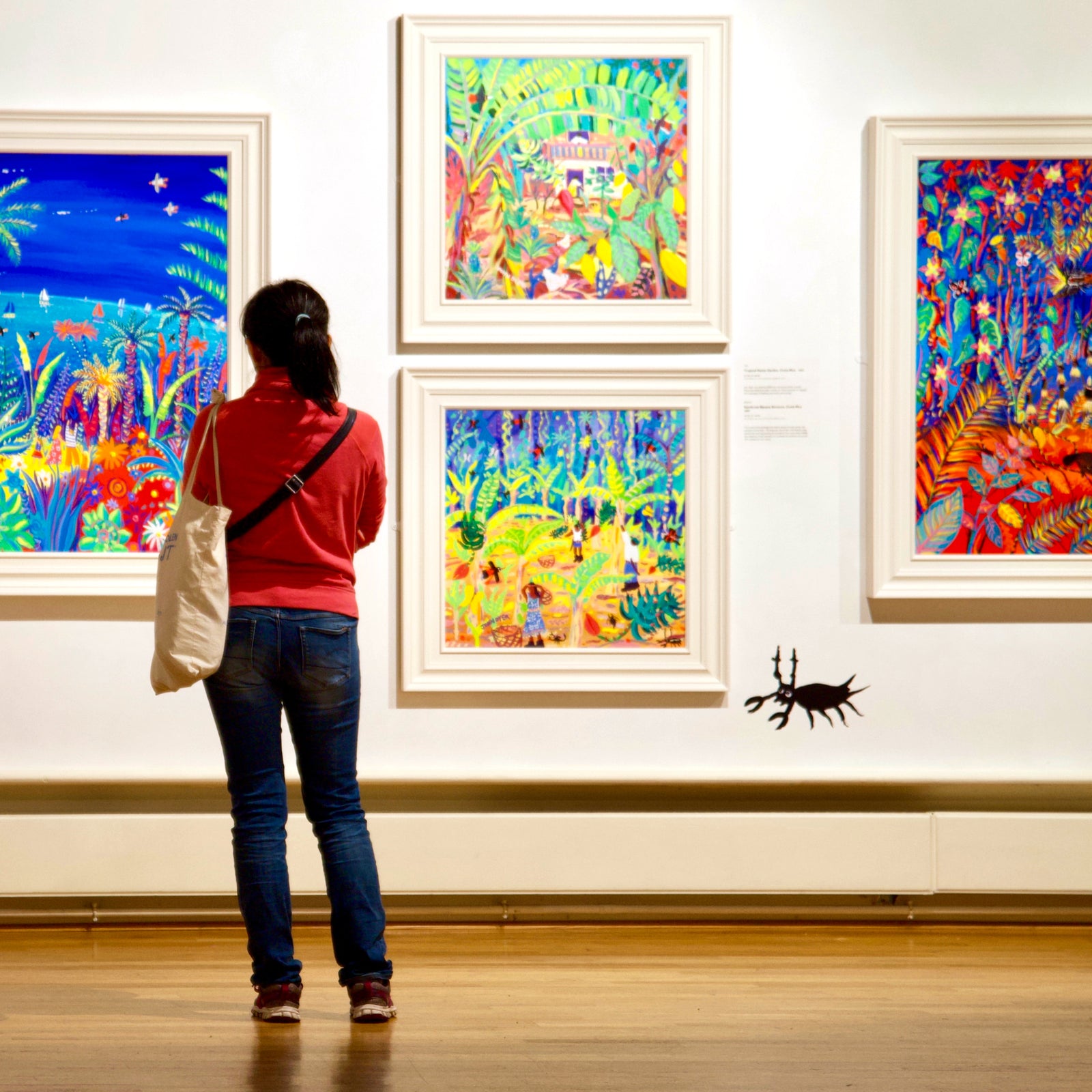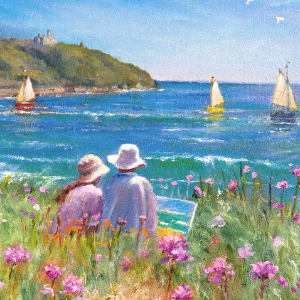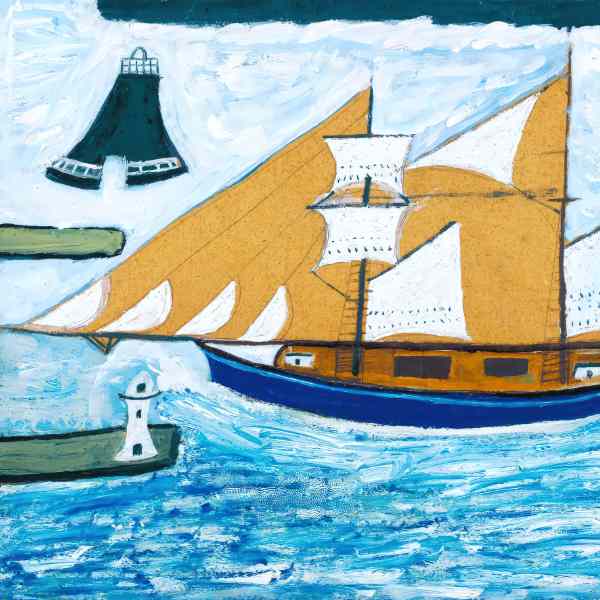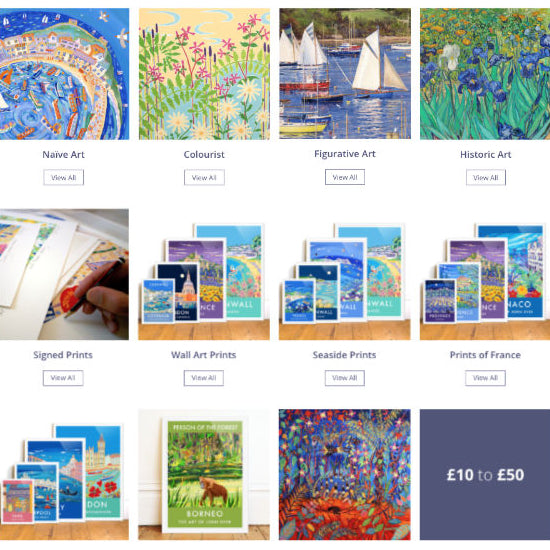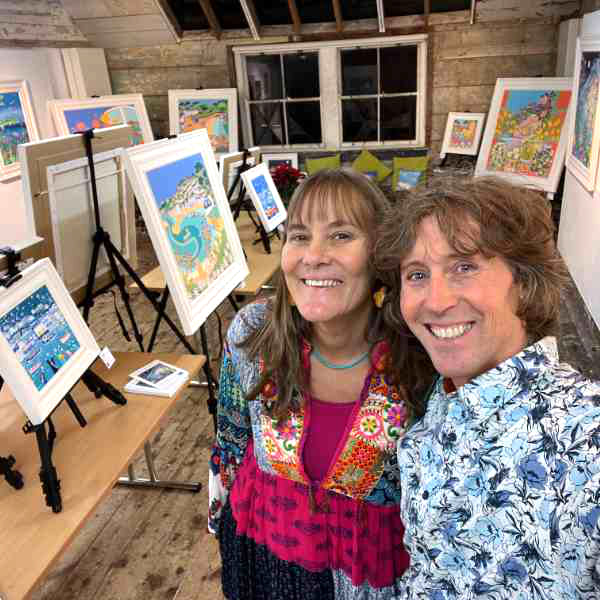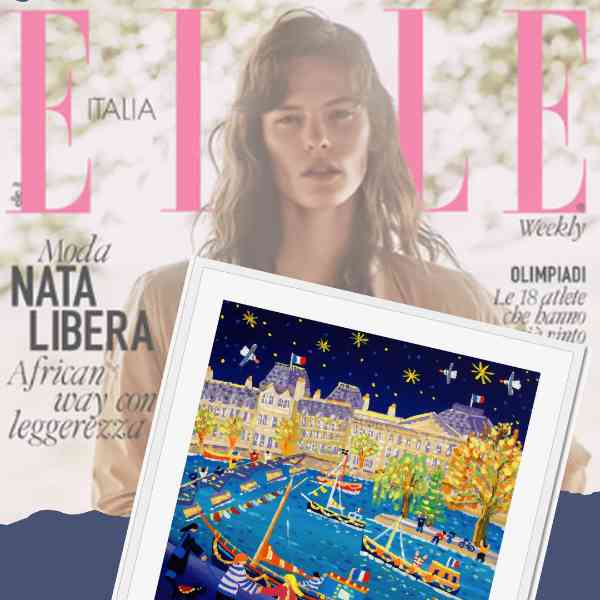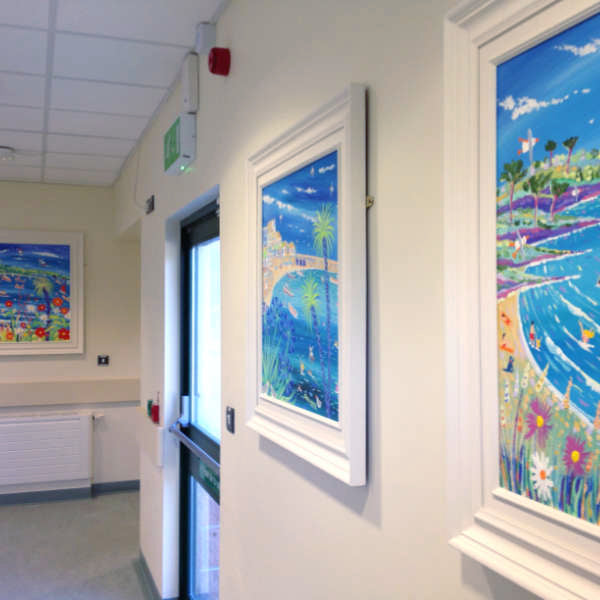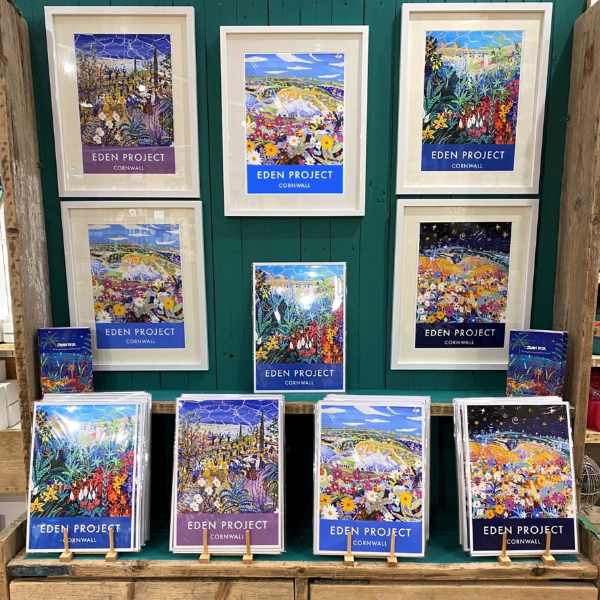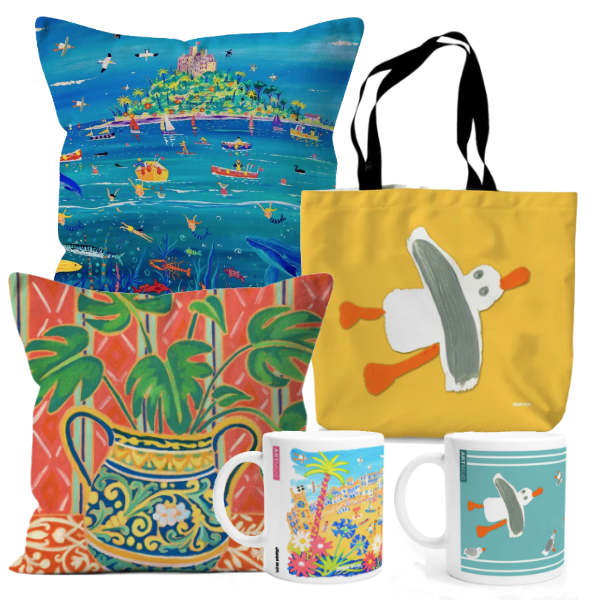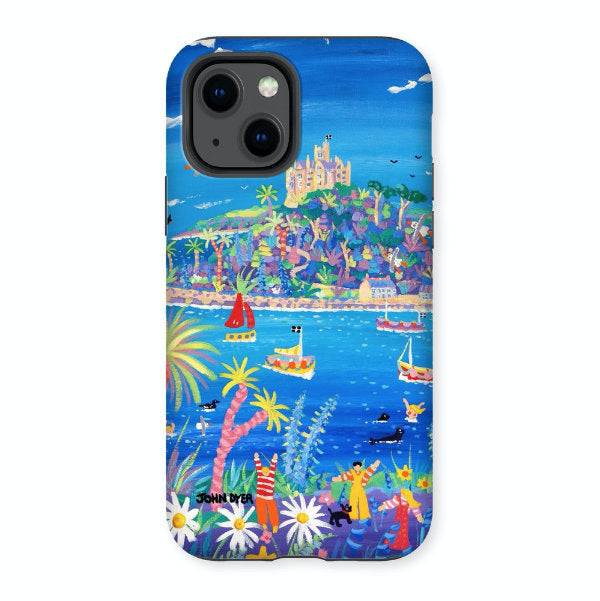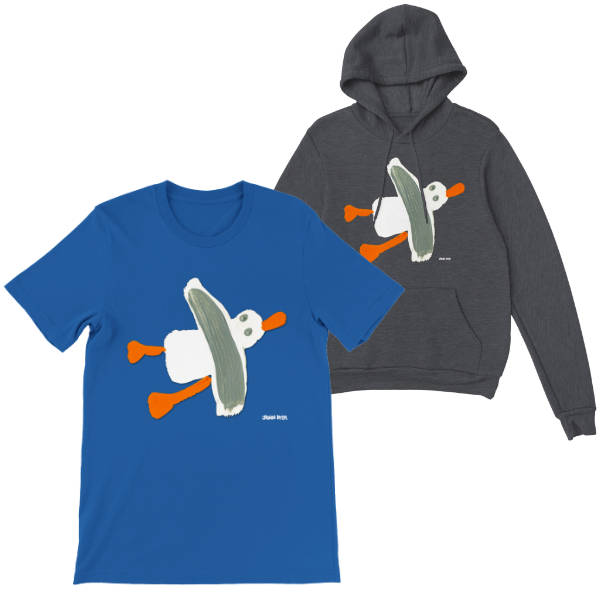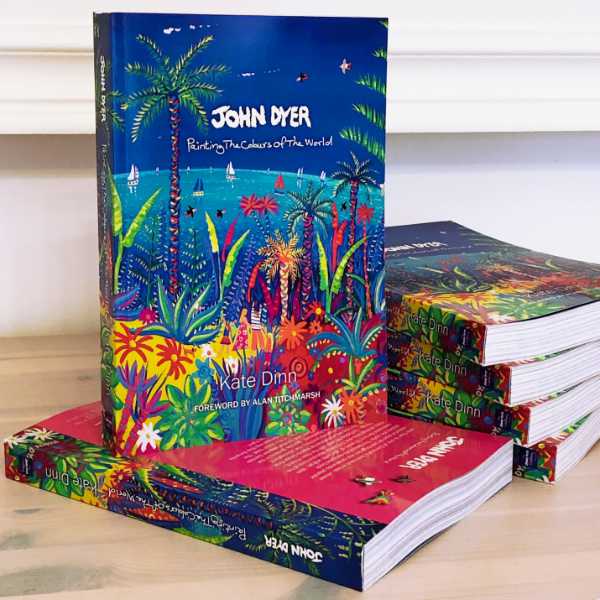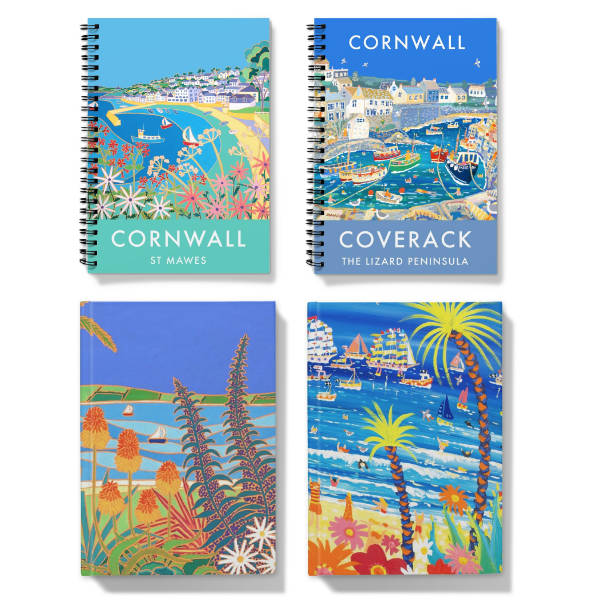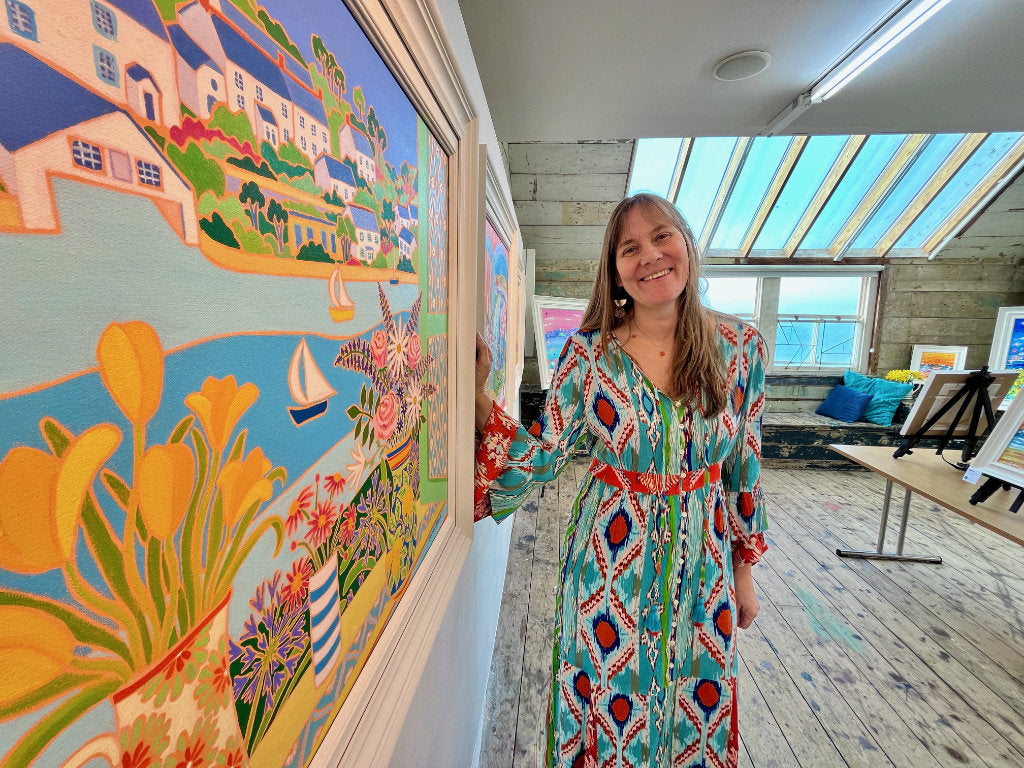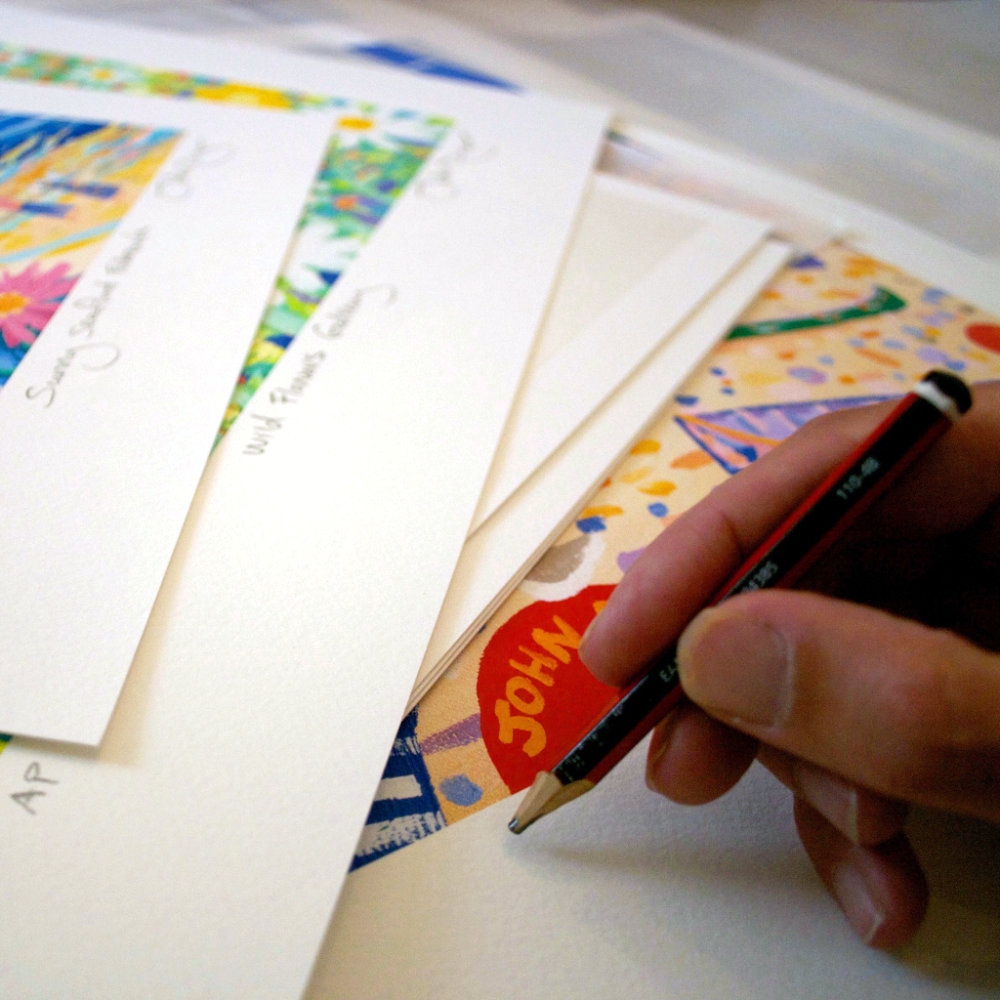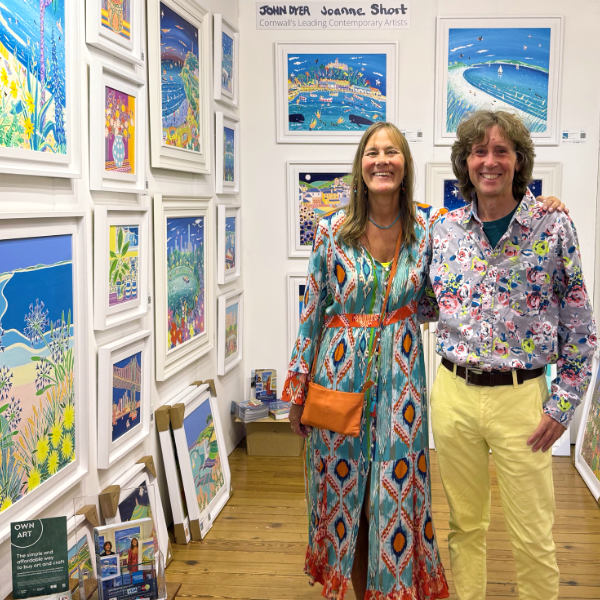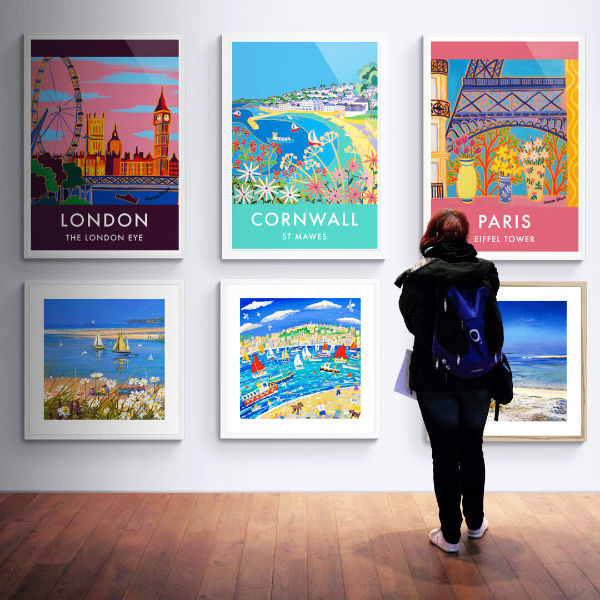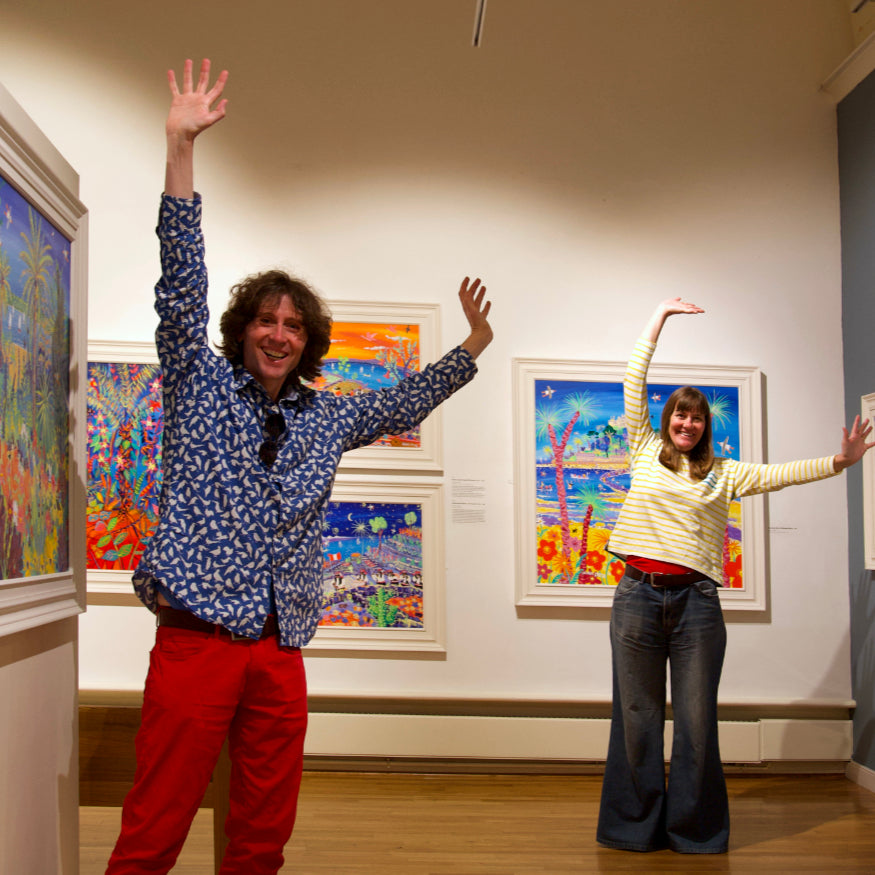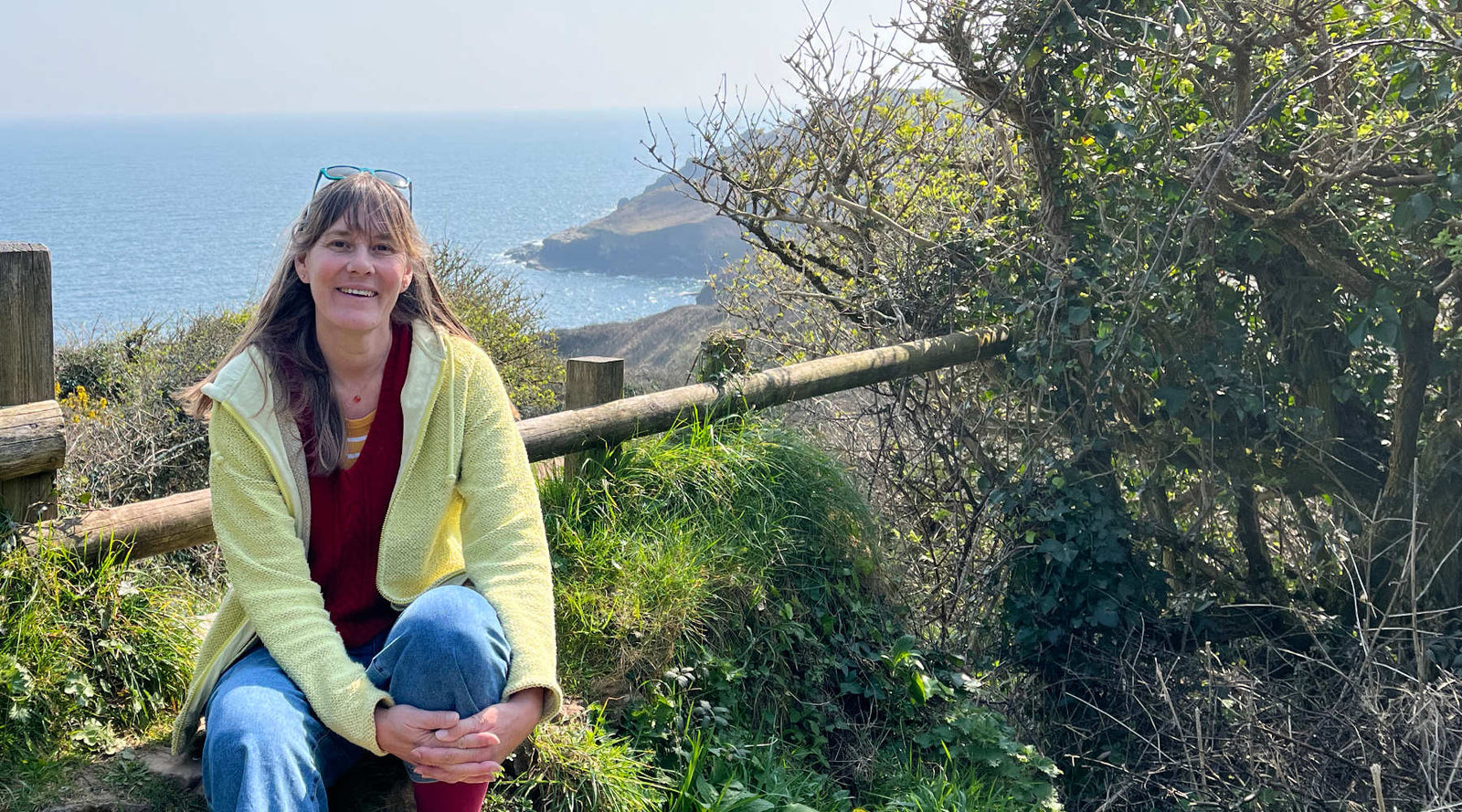
Above: Artist Joanne Short on the cliffs near Cadgwith
I have always loved the sea. The sound of waves crashing against the shore, the salty smell of the air, and the endless expanse of blue. There is something about being by the ocean that makes me feel so alive. A few days ago, John and I had the opportunity to walk from Cadgwith to Church Cove on the Lizard Peninsula on Cornwall's south coast. This was an amazing experience, and I wanted to share it with you all!
Above: Artist Joanne Short at Cadgwith
I never tire of walking the Cornish Coast. Each time I do, it feels like a new journey with different things to see and appreciate. Both John and I never fail to be inspired to create more coastal art while out and about in Cornwall. The coastline on the Lizard peninsula is no exception. In this blog post, I'll take you on a virtual walk along that stretch of coast, sharing our drawings, paintings and prints of the area – as well as some history of Cadgwith and Church Cove.
Unlike the stunning beaches and rolling waves of the Atlantic ocean on the north coast, this area of Cornwall feels much more rugged and intimate; it is steeped in history and is very interesting geologically.
Cadgwith
Our circular walk, which was about 4 miles, started in the charming fishing village of Cadgwith. We wandered through the narrow streets, admiring the pretty houses and boats. The village has a long history of fishing and many of the tiny thatched cottages were originally lived in by local fishermen. Today the cove is still used for fishing and the boats are hauled up onto the beach out of the sea, which create quite an image. There is a fantastic contrast between the colourful painted boats and the grey shingle beach.
Above: Vintage Style Seaside Travel Poster by John Dyer. Cadgwith Cornwall
Cornish smugglers
Cadgwith, a small fishing village, was said to have once been used as a smugglers' hideout and there are many stories about shipwrecks along the coast and wreckers collecting the haul.
The history of smuggling in Cornwall dates back to the 13th century, when the first recorded instance of smuggling occurred. Smuggling flourished in Cornwall because of its remote and rugged coastline, which made it a difficult area for customs officials to patrol. Cornish smugglers became adept at evading capture, and their activities helped to keep prices for contraband goods low.
During the 18th century, Cornwall was one of the main areas for smuggling in Britain. Smuggling became so prevalent that it is estimated that up to a third of all goods imported into Cornwall were smuggled. The most commonly smuggled items were tea, tobacco, brandy and wine.
Cornish smugglers often used small boats to transport contraband goods. These boats were able to navigate the rocky coastline and reach sheltered coves, making them ideal for smuggling operations.
The Cornish coast was also home to several secret tunnels and caves, which were used to store smuggled goods. These hidden places made it even more difficult for the goods to be found, and the smugglers caught.
Fishing
Cornish fishing has a long and varied history, dating back to the early Middle Ages. The industry has seen many changes over the centuries, from the introduction of new technologies and methods to the decline of traditional fisheries.
Above: Painting by John Dyer. 'The Cat chasing the Rabbit, Cadgwith', 24 x 36 inches oil on board
Pilchards were the local catch for Cadgwith and in 1904 the story goes that over one and a half million pilchards were caught in just four days. Nowadays it is mainly crabs that are caught in this area. The buildings surrounding the cove are all used by the fishermen and many crab baskets are piled around; it's quite a sight.
National Trust coastal path
Leaving the village towards the west we followed the coast path up the hill to find ourselves looking down on the village from above
The South West Coast Path is a 630-mile (1010 km) long-distance footpath encompassing the coastline of Cornwall. It starts in Minehead in Somerset, all the way around and back to Poole in Dorset.
Above: Oil on Canvas, painting by Joanne Short, 'Seafront Flowers, Minehead'
The National Trust is the most significant landowner along the Coast Path, managing 185 kilometers of the route. It carries out conservation work on heritage features in its care and numerous path maintenance.
Exiting the village and heading west there is a perfect viewing point looking back to the cove, with several benches perfectly situated for a picnic stop and where you can sit and watch the fishermen preparing for their trip to collect their catch. We explored the views looking across the rooftops and discovered a beautiful view through a subtropical garden full of echiums and palm trees.

Above: Sketch book drawing by Joanne Short of Cadgwith Cove in Cornwall
After exploring Cadgwith, we headed towards Church Cove. The footpath running along the coast was edged by a variety of beautiful wild flowers- the perfect reminder that spring has arrived and that summer is on the way.
The flowers that can be found on the coast vary depending on the time of year. In late spring, there are pink thrift and plenty of wildflowers such as yellow gorse, bluebells and daisies, primroses and violets. In early summer, there are wild roses, heathers and bladderwort. This week the gorse was an amazing shade of yellow, jumping out against the background of the turquoise sea in the bay.
The Devil's Frying Pan
Following the path along the cliff, we came to a 100m depression in the rugged cliffs with an arch remaining over the sea. It is named the Devil's Frying Pan because in rough weather the water looks like it is boiling below and the boulder in the middle looks like an egg.

Above: The Devil's Frying Pan
Church Cove
Church Cove is a small, sheltered inlet on the south coast of the Lizard Peninsula. It's said to be one of the most beautiful spots in Cornwall and it's easy to see why! The cove is surrounded by sheer cliffs, which are covered in lush vegetation, and there's a slipway and stony beach at the bottom. It was the perfect spot for a rest.
Above: Cornish artist John Dyer on the Cornish Coast Path between Cadgwith and Church Cove
We sat on the headland, overlooking Church Cove and were reminded of how much we love painting Cornwall. It is always great to discover new places to paint and always well worth the effort of just going that little step further to capture the exact view you've been searching for!
Walking up the lane from the cove is a very quaint village that is well worth the visit. The thatched cottages have the most beautifully planted gardens and the microclimate there means that the flowers are in abundance.

Above: Joanne Short at Church Cove on the Lizard Peninsula
The Lizard Lighthouse
A short distance along the coast is The Lizard Lighthouse situated at the southernmost point of the UK. The Lizard Point is renowned for underlying rocks out at sea, which is why a lighthouse was built on the headland to warn ships of the danger. Many a shipwrecked boat would have been washed up on the beaches in this area.
Above: Limited Edition Print by Cornish Artist John Dyer. 'Racing to the Lizard Lighthouse'
The Lizard Lighthouse was constructed in 1619. It is one of the oldest working lighthouses in Cornwall. The light from the lighthouse can be seen for 100 miles out to sea on a clear night. It is open to the public and worth visiting.
Above: Lizard Point and Lighthouse Art Prints of Cornwall by Cornish Artist Joanne Short
The journey from Cadgwith to Church Cove is a beautiful walk along the Cornish coast which I highly recommend. The coastline is characterized by its dramatic cliffs, crashing waves, and stunning coastal flowers. The geology of the area is also fascinating. This area has a rich history, with evidence of human activity dating back thousands of years. Church Cove is a beautiful and peaceful spot, perfect for taking in the stunning views and relaxing after a walk along the coast. I am really looking forward to exploring more of the Lizard peninsula and discovering more of its hidden gems.
Cornish Art Limited Edition Print by John Dyer. 'Moonlit Skinny Dippers, Cadgwith'. Cornwall Art Gallery Print
Please visit our gallery website to view our collection of paintings and prints of coastal art from around this area and feel free to contact us if you have any queries or would like to discuss commissioning a piece of work.
I hope you have enjoyed this blog and do check out our other blogs about visiting Cornwall and the amazing coast.


